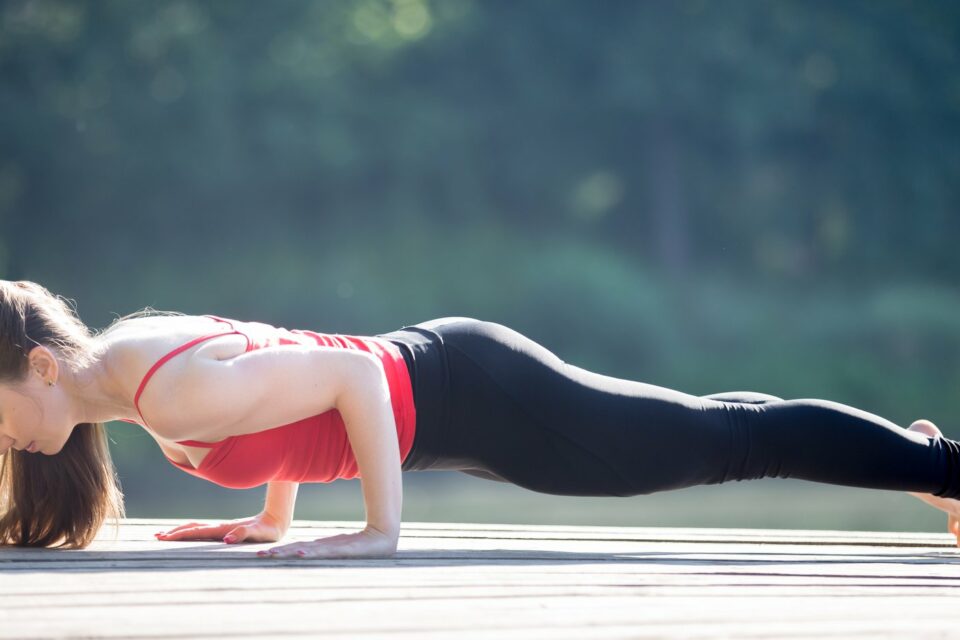Chaturanga dandasana: learn this pose in 5 steps

Chaturanga dandasana or four-limbed staffed pose, its direct translation from Sanskrit, is a common pose in many different yoga poses. For example, the well-known sequences of Sun Salutations always have Chaturanga Dandasana, as most of Vinyasa Flow Classes.
Although it’s common, many mistakes are common and can compromise the health of the shoulders.
Receive all our tips by email!
Love Astrology? Subscribe Now and Receive Exclusive Content!
We are going to cover the main steps to do a good Chaturanga dandasana, and share some of the most common mistakes. Learn more and improve your yoga practice.
Chaturanga dandasana in 5 steps
It’s important to understand if you can choose the complete version of this asana. For those who have shoulder problems, an adapted version.
For those who can jump to the fullest version, these are the main steps:
- Exhale as you slowly bend your elbows, down your body and enter the pose;
- The body is parallel to the floor from head to wheels. Hands must be apart the same distance of the shoulders, fingers spread on the floor;
- There is a tendency for the body to collapse at the end of the movement. Counteract by keeping the elbows towards each other activating the breastplate; keep the abdomen and psoas activated and the glutes;
- Once established in the pose, create traction by pushing the floor forward with the hands, and backward with the feet (while the wheels continue against the imaginary wall);
- To end the pose, let the body reach the floor or go directly to Urdhva Mukha Svanasana.
Tip for beginners: once keeping the body parallel to the floor requires a big effort that is not always possible, to the beginners or with any other condition, it’s possible to adapt.
To benefit from this asana, the body must be aligned, so it’s preferable to leave the knees on the floor. Once the weight of the body can easily be held without collapsing the abdomen and arms, the full version can be chosen.

Chaturanga dandasana and injuries
Although Chaturanga dandasana is not a complicated asana, since it’s performed so many times during a practice, if it’s not done right, can result in injuries.
It can aggravate lower back problems in case you let your back collapse. That’s why is so important to keep the body aligned and the core strong during the pose.
Shoulder problems can also get worse because of this form of a lower plank. Usually, this happens then there are a lot of repetitions during the practice. The options go from choosing the adapted position, to decrease the number of repetitions.
Although pregnancy is not an injury, we also mention it here. This pose is not recommended during pregnancy because of all the strength it requires from the abdomen. Those women who have been doing yoga for a long time and feel comfortable about this pose must still pay attention and the best option is always to consider talking to a more experienced teacher and decided individually.
The benefits of Chaturanga
All yoga poses have loads of benefits, right? Sure! Chaturanga dandasana is not different. These are the benefits of lower plank:
- Strengthens wrists and hands;
- Builds stronger triceps;
- Works the spinal muscles;
- Strengthens the abdomen muscles;
- Helps losing weight;
- Tones the buttocks;
- Develops stability;
- Build stability in the shoulders.
Dominate the lower plank position is really important for doing Surya Namaskar A and B calmly and safely. Although some attention is needed as we mentioned, it’s a great way of building strength for more advanced exercises. Work on it, and get ready to improve your yoga practice!
You may also like:
- Master Adho Mukha Svanasana
- Yoga for overweight: a useful tool
- Yoga injuries: tips to avoid them
- Yoga poses for beginners: the gateway to a regular practice

